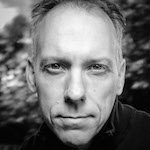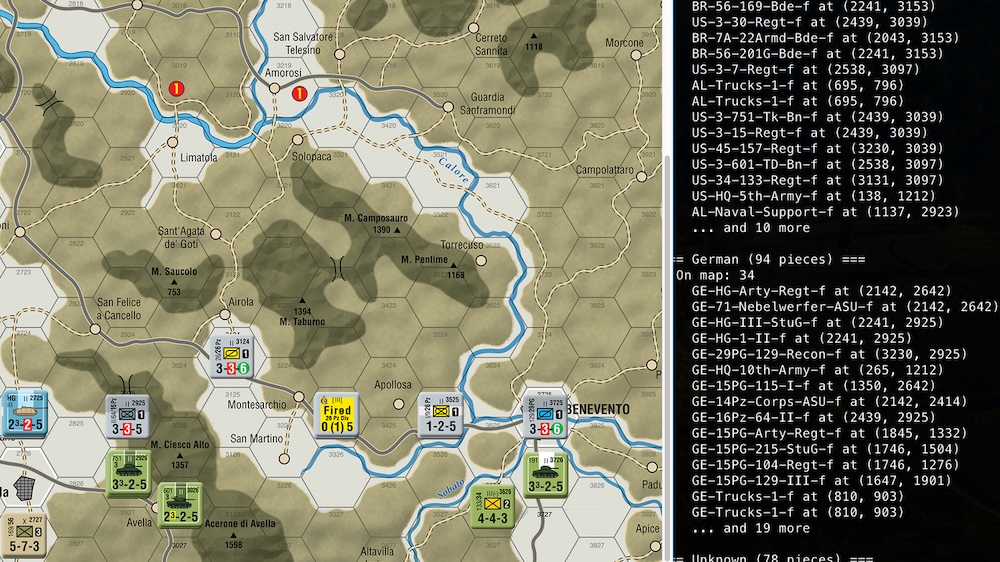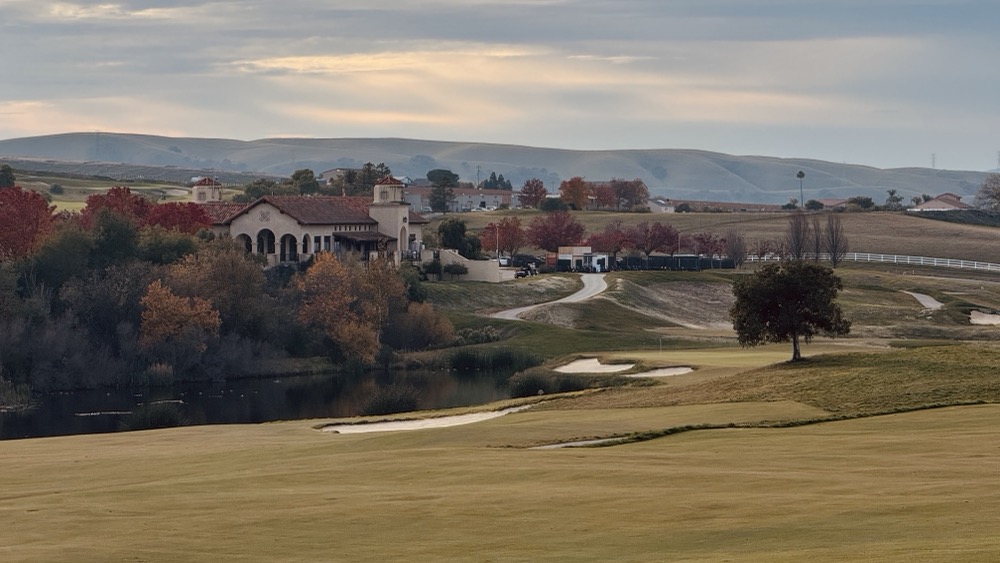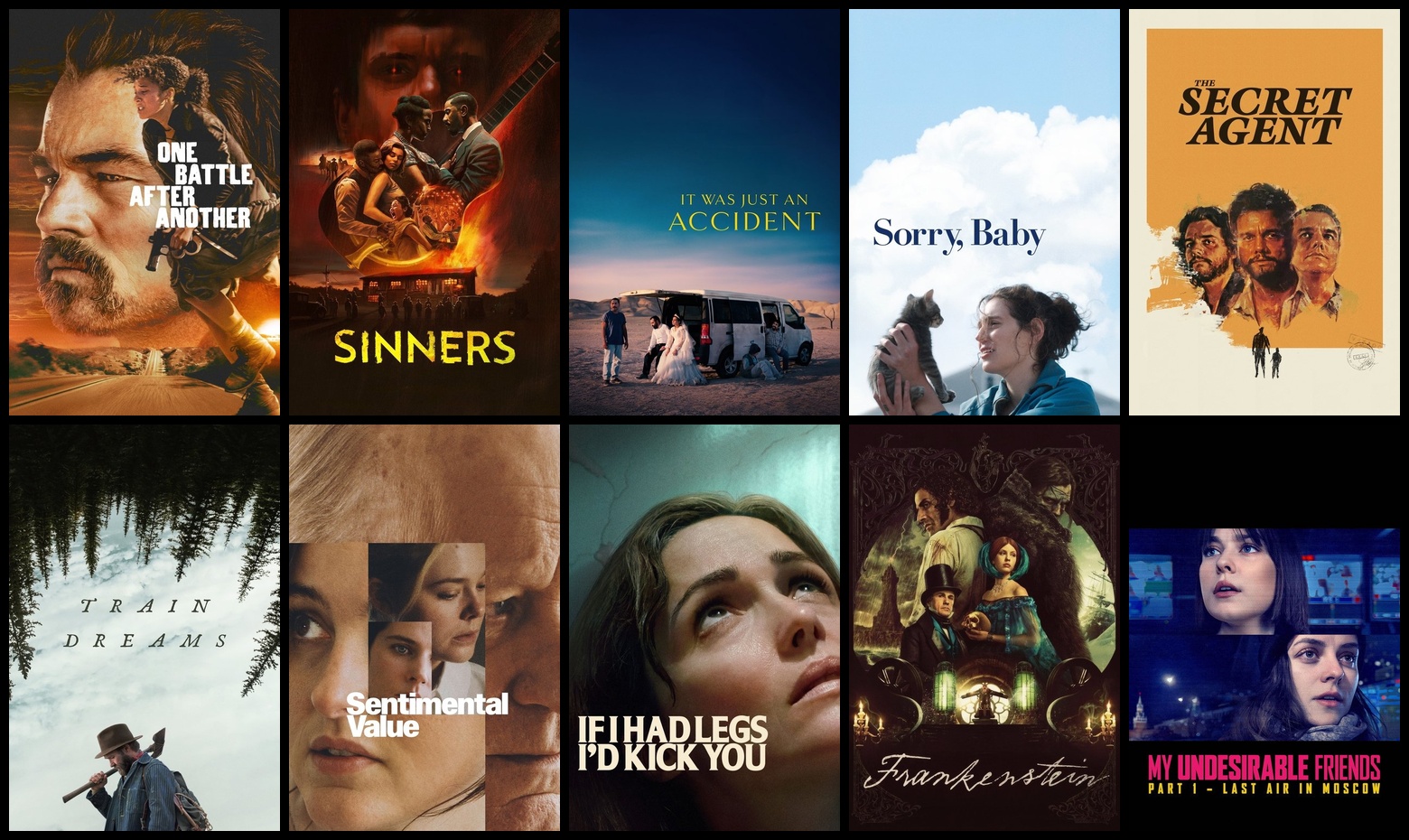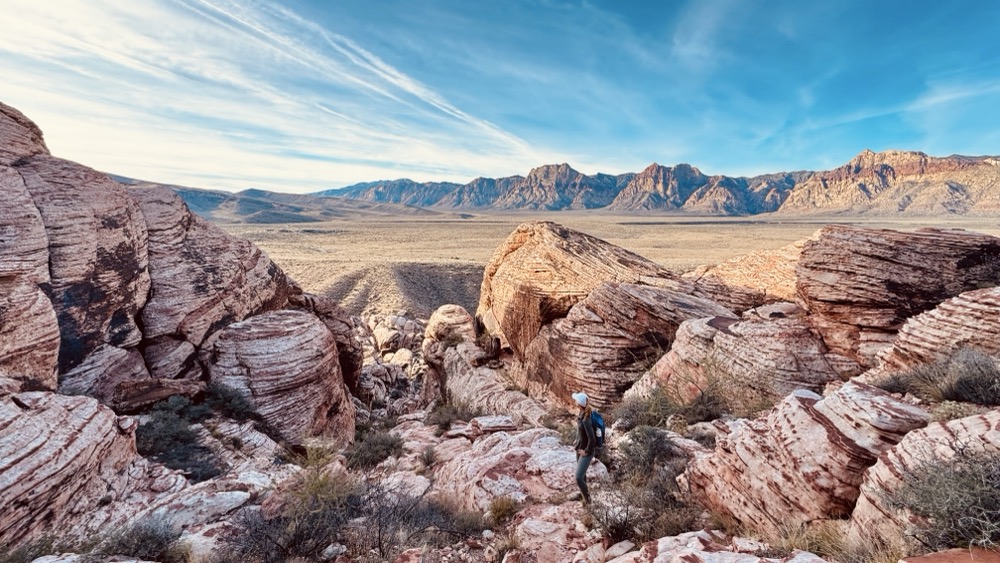Berlin Remembers
In my last post I spoke of my memories of Berlin history museums and installments: that, at least in 1990, perhaps they had still not fully come to grips with the tragic events initiated by the Nazi regime.
 Inside the holocaust memorial building
Inside the holocaust memorial building
Several sites that Julie and I visited put those concerns to rest. We did our usual walking tour on arrival in Berlin, but didn’t start our deep dive until the next morning. We returned to the Memorial to the Murdered Jews of Europe to go into the underground museum and remembrance area. It was extremely well produced and curated and pulled no punches. The presentation and experience suited the horrific content; once again Julie and I were thankful we started early and had very small crowds with us.
There’s been some criticism of the focus on Jewish memorials for the holocaust while there were other victims. We visited multiple other sites that, while not as complete, were appropriately scaled for the impact it had on the community (all my opinion of course). We visited memorials for political victims, Roman and Sinti (Gypsy) victims, and homosexuals.
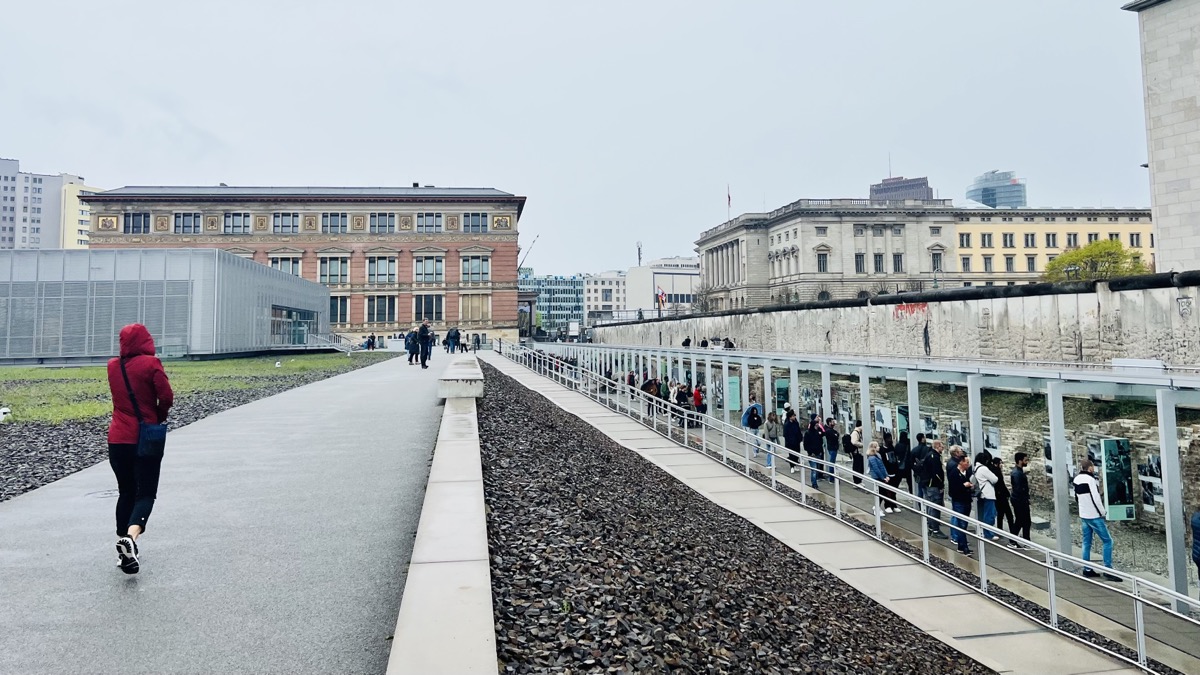 Julie strolling in rain by Topography of Terror
Julie strolling in rain by Topography of Terror
We also visited the Topography of Terror exhibition, focused on the governmental agencies housed in a few blocks in Berlin that were responsible for so much of the terror and murder before and during WWII. Gestapo, SS, etc. The museum is in two parts: an outdoor section built over the remains of the Gestapo headquarters (and adjacent to the Berlin wall) provides a timeline of the build-up to atrocities, and a comprehensive indoor museum with more content than we could consume in our visit. I think the exhibit successfully walked the fine line between providing adequate historic content and potentially glorifying the perpetrators.
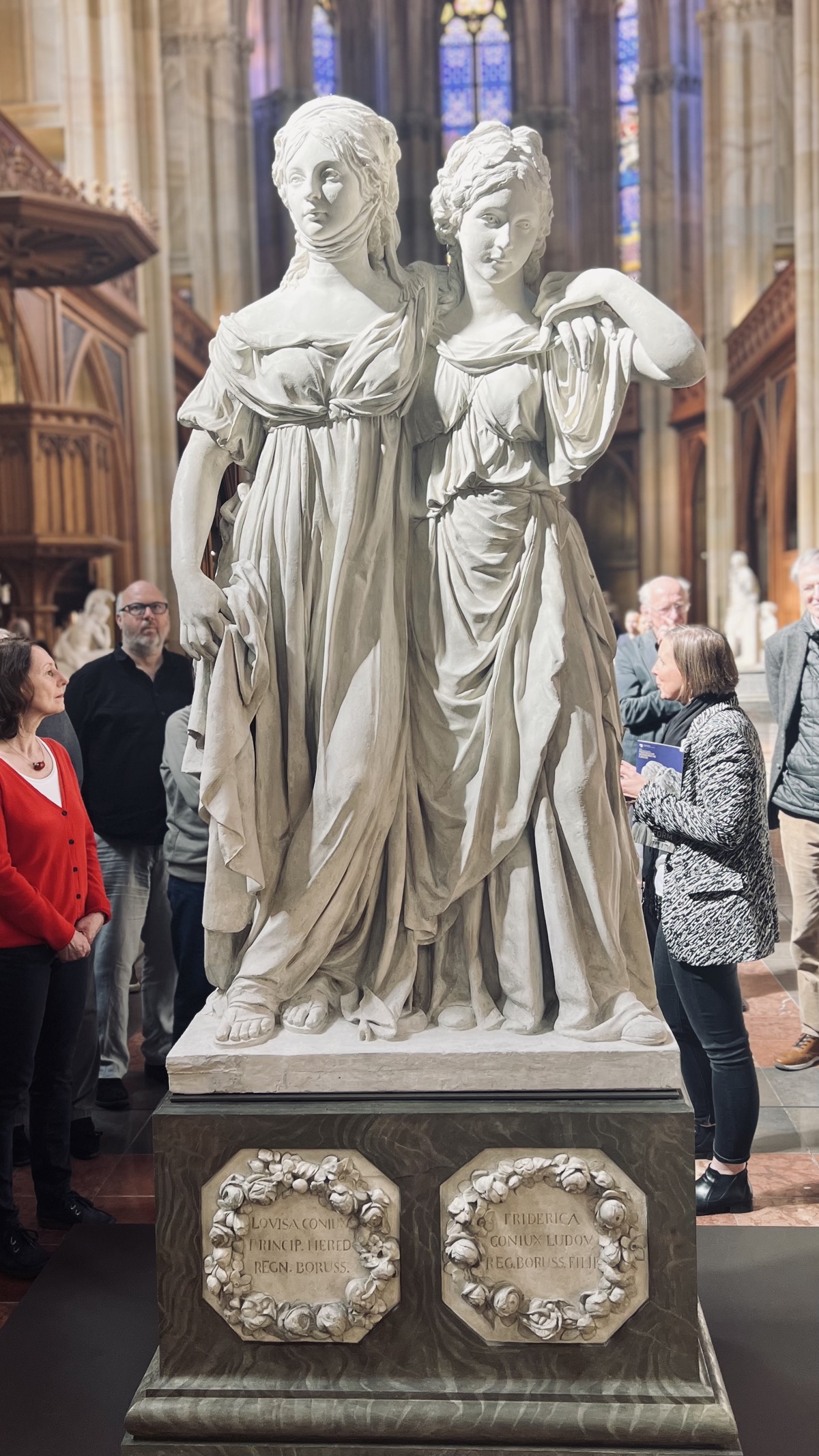 Church sculpture
Church sculpture
On to lighter topics, we did a small amount of art viewing in Berlin though that was not the focus. We had some time to kill before an afternoon concert and wandered into the Friedrichswerder Church, finding the lovely sculpture above and a nicely done display about Herr Schinkel, architect of so many of Berlin’s sites.
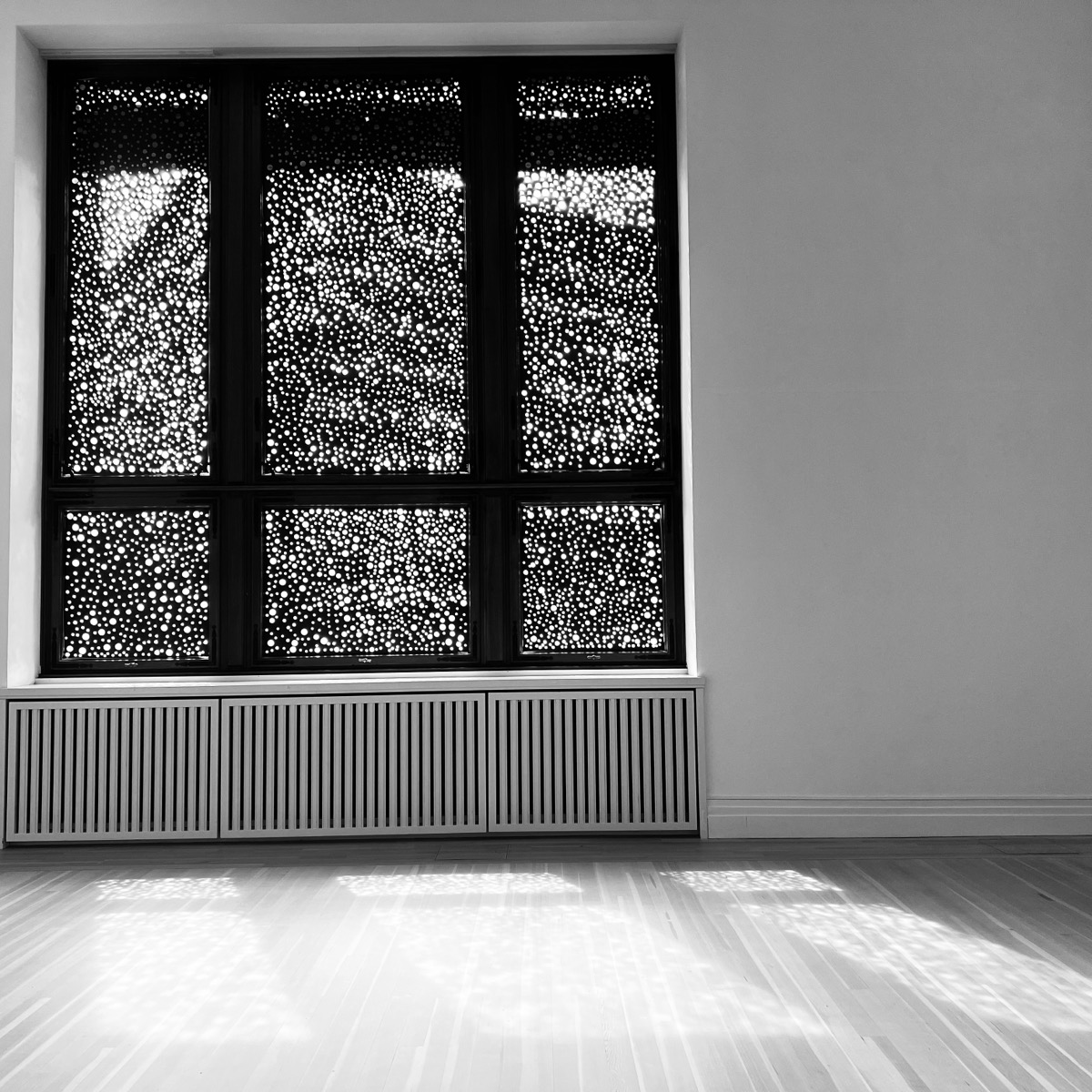 Boyd window art
Boyd window art
We took a chance on some very modern art, visiting the Martin-Gropius-Bau building and art museum. There was an at-times interesting but mostly confusing display on the history and struggles of native peoples surrounding the Indian Ocean, and an exhibition by Australian Aboriginal artist Daniel Boyd. We loved this exhibit, a mix of traditional art hanging on the wall and creative plays with light and texture.
